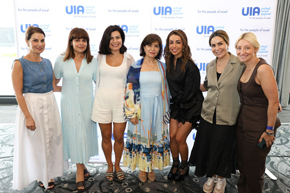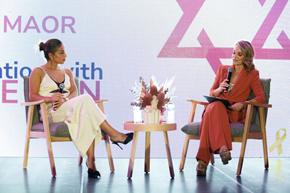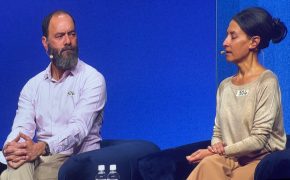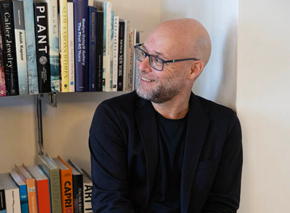From Australia’s Jewish past
Hannah (Hansey) Eizenberg – Concert Pianist, Book Importer and Publisher

Hansey Eizenberg
Hannah was the daughter of David and Ettie Eizenberg and was born in Sydney on 4 January 1904. Her father, a businessman and a fine violinist was born in England and her mother in Riga. She had two younger brothers, and the family lived in Sydney’s Eastern Suburbs. Her grandmother, Basha Diamond, always beautifully dressed, would provide parcels to pensioners who called to her home in Centennial Park to receive them. Hannah became known as Hansey and attended Claremont College in Randwick before studying music at the New South Wales Conservatorium of Music, where she performed in concerts with the conservatorium orchestra and gave recitals. In 1921, at age 17, she gave her first recital to a capacity audience at the Conservatorium, performing an entire program of Bach, Beethoven, Liszt, Scarlatti, Chopin, and Rachmaninoff. She travelled to Melbourne to give piano recitals before she left to travel overseas.
Following a visit to Riga with her mother to see family members, she enrolled at the Royal Academy of Music in London. At age twenty, she established herself as a professional performing at the Wigmore Hall in 1925 and at a prom concert conducted by the famous English conductor Sir Henry Wood in the Albert Hall, where she performed Beethoven’s Third Concerto. Later, she studied in New York with Leopold Godowsky, a Lithuanian American pianist and composer. He was the artist featured in the first commercial gramophone record when he played one of his compositions and other works.
Hansey married Herbert Davis in Chicago in 1925 and shortly after attended a dinner party hosted by Leopold Godowsky. another of his guests was Sergei Rachmaninoff, the world-renowned Russian composer and pianist. Sergei mentioned that Leopold wished to give Hansey a grand piano as a wedding present. The next day, the two famous pianists helped the couple choose a piano at the Boston piano factory, where Hansey was invited to play for Rachmaninoff. These two renowned pianists wrote their signatures inside the piano to remain there for the rest of its days. Hansey had the opportunity to meet many well-known musicians whilst she was overseas and subsequently, when back in Australia, and no longer playing professionally, she was performing privately and for charity as well as through her support of musical organisations such as the Friends of the Israel Philharmonic Orchestra and the Friends of the Australian Opera.
The first commercial publishing record company in Australia was set up by Herbert and Jack Kippel a family member and was known as D Davis and Co in 1927. The first record was pressed by Hansey at a factory in Waterloo. Herbert and Jack, later known as Jack and Herbert Davis, were involved with the American company Brunswick Records to manufacture and distribute gramophone records. Although Herbert was not a musician, he had a great love of music.
The couple had one daughter, Barbara, who married Bernard Leser, the founder of Vogue Magazine. When Herbert died in 1933, Hansey became active in his business which had added book publishing to its music list. Following World War II, the business concentrated on books and the music publishing part of the business was sold. The Little Golden Books for children came into their repertoire and printed under licence. In 1960 Herbert’s brother passed away and it was decided to sell the publishing business. At the same time, she became managing director of Davis Publications and became a member of the Institute of Directors, a membership she held for twenty years. In 1970, she was the only female member as well as of the Australia-Israel Chamber of Commerce. Hansey took an interest in the publishing world and became a publisher’s representative. The company was by then representing many book publishers and Hansey became the only woman publishers’ representative and book distributor in Australia. The company specialised in non-fiction books, textbooks, art, and general literature. Hansey, assisted by her manager, selected every book that was stocked. This role was not an easy one for her. Despite her outgoing personality, male publishers were sceptical. By the 1970’s this began to change, the table turned, and these publishers were approaching her. By then she had about twenty assistants with representatives throughout Australia. She became one of the Australian executives of the United States Books Association. Hansey retired from the business in 1983 and travelled extensively continuing her love of music by attending concerts wherever possible.
In 1939, she married Sam Simblist, a lawyer and later a judge. Appointed by the premier of NSW Australia in June 1976 as Commissioner to carry out an enquiry into the role of Port Botany (Container Terminal Development) in terms of the need of the State and the environmental impact including social and economic aspects of the existing and planned projects. Simblist Road, Port Botany, Sydney NSW named after him. Their daughter, Diane married an American nuclear physicist, and Diane worked as an executive with the First National Bank in Alabama USA. Between Barbara and Diane, there were eight grandchildren, all of whom were interested in art and literature. Sam died in 1977 and at some stage Hansey and he divorced.
Hansey moved around the social scene of Sydney and attended functions at the National Council of Jewish Women, WIZO, and EZRA, where she served as president. She would see all her friends at various social and fundraising activities and card parties were organised to raise funds specifically for EZRA and Israel’s mothers and babies.
It is interesting to learn that the orchestra with which Hansey played in the early 1920s was founded by the first director of the Sydney Conservatorium, dr Henri Verbrugghen, who in 1916 persuaded the state government to subsidise an orchestra of professional musicians plus conservatorium students. This orchestra later became the first full-time orchestra in Australia.
Hansey passed away on 13 February 1993 in Sydney at the age of eighty-nine. The inscription on her tombstone reads ‘A Guiding light to All’.
The AJHS acknowledges the following references in the preparation of this story:
National Library of Australia – Trove; Beginning with Esther – Lysbeth Cohen; Sydney Morning Herald – 2 October 2020 -David Leser

The Australian Jewish Historical Society is the keeper of archives from the arrival of the First Fleet in 1788 right up to today. Whether you are searching for an academic resource, an event, a picture or an article, AJHS can help you find that piece of historical material. The AJHS welcomes your contributions to the archives. If you are a descendant of someone of interest with a story to tell, or you have memorabilia that might be of significance for the archives, please make contact via www.ajhs.com.au or stories@ajhs.com.au.







